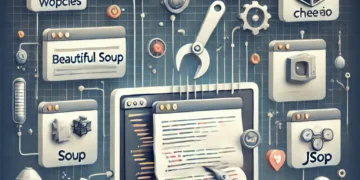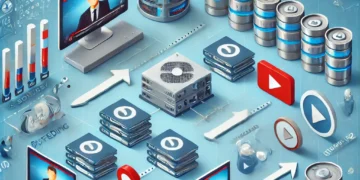In our journey through the digital age, the evolution of how we store our ever-growing piles of data has been nothing short of a tech saga. It’s like watching the evolution of human memory, but with less forgetting and more bytes. From the days when we marveled at the magic of a floppy disk to now, when we can store entire libraries on something the size of a postage stamp, let’s take a nostalgic and informative journey. We’ll dive deep into the nuts and bolts of how these storages have worked, tracing their path from the quaint, almost forgotten technologies to the sleek, futuristic devices we handle today.
Floppy Disks
How They Work: Floppy disks were the humble beginnings of portable storage, where data was etched onto a flexible magnetic disk housed in a plastic shell. When you inserted a floppy into a drive, the disk would spin, and a read/write head would glide across its surface. This head magnetized or read the magnetic patterns on the disk, translating these into binary data. The mechanism was simple yet effective for its time, allowing users to save and transport files, albeit in very limited quantities by today’s standards.
- Legacy: Now a relic of computing history, floppy disks were once the pinnacle of portable storage technology.
Hard Disk Drives (HDDs)
How They Work: HDDs are the workhorses of storage, with multiple spinning platters coated in a magnetic material. Data is stored as tiny magnetic fields on these platters. An actuator arm, akin to a record player’s tonearm, moves across these platters. The read/write head at the end of the arm either magnetizes bits of the platter to write data or senses the magnetic fields to read data.
- Practicality: They offer vast storage at a lower cost per gigabyte, but their mechanical nature makes them slower and more fragile than modern alternatives.
Magnetic Tapes
How They Work: Magnetic tapes resemble the old video tapes but for data storage. They consist of a long strip of magnetic tape where data is written or read sequentially as the tape moves past a stationary head. This method is ideal for data that doesn’t need frequent access but must be stored in large volumes, like backups or archival data.
- Endurance: Their durability and capacity make them excellent for long-term data storage, often used in data centers for backup purposes.
Optical Discs (CDs, DVDs, Blu-rays)
How They Work: Optical discs store data as a series of pits and lands on the disc’s surface. A laser beam reads this data; when it hits a pit, the light scatters, and when it hits a land, it reflects back. This difference in reflection is interpreted as digital data. CDs, DVDs, and Blu-rays escalate in storage capacity due to advancements in laser technology and data packing density.
- Variety: From CDs for music and basic data to Blu-rays for high-definition video, each type serves different aspects of our digital consumption.
Solid-State Drives (SSDs)
How They Work: SSDs are the silent revolutionaries, utilizing flash memory for data storage without any moving parts. Data is stored in memory cells arranged in grids, with each cell capable of holding multiple bits. Writing data involves adjusting the electrical charge in these cells, and reading involves detecting this charge. SSDs offer unparalleled speed and reliability, as there’s no mechanical latency or wear from moving parts.
- Advantages: They’re fast, quiet, and less prone to physical damage, making them favored for both personal and enterprise use.
USB Flash Drives (Pen Drives)
How They Work: Pen drives are essentially small SSDs, using flash memory to store data. When plugged into a USB port, they communicate directly with your computer to read or write data. The process is similar to SSDs but on a reduced scale, designed for portability and convenience.
- Convenience: They’re perfect for transferring files between computers or quick backups, offering a balance of speed, size, and capacity.
Memory Cards
How They Work: Memory cards, like SD or microSD, operate on the same principles as flash drives, using non-volatile flash memory for data storage. They’re tailored for specific devices, fitting into slots to expand storage capacity. A controller inside the card manages data, ensuring efficient use of the memory and prolonging its life through techniques like wear-leveling.
- Ubiquity: They’ve become indispensable for devices where storage needs to be expanded easily, from digital cameras to smartphones.
Conclusion
Each of these storage devices has played a significant role in managing our digital lives, evolving from the labor-intensive to the lightning-fast. Understanding how these technologies work not only gives us a greater appreciation for the digital conveniences we enjoy but also highlights the ingenuity and innovation that have transformed how we store, access, and think about data. From the mechanical to the electronic, each step in storage technology has been a leap towards more efficient, reliable, and vast digital landscapes.










































